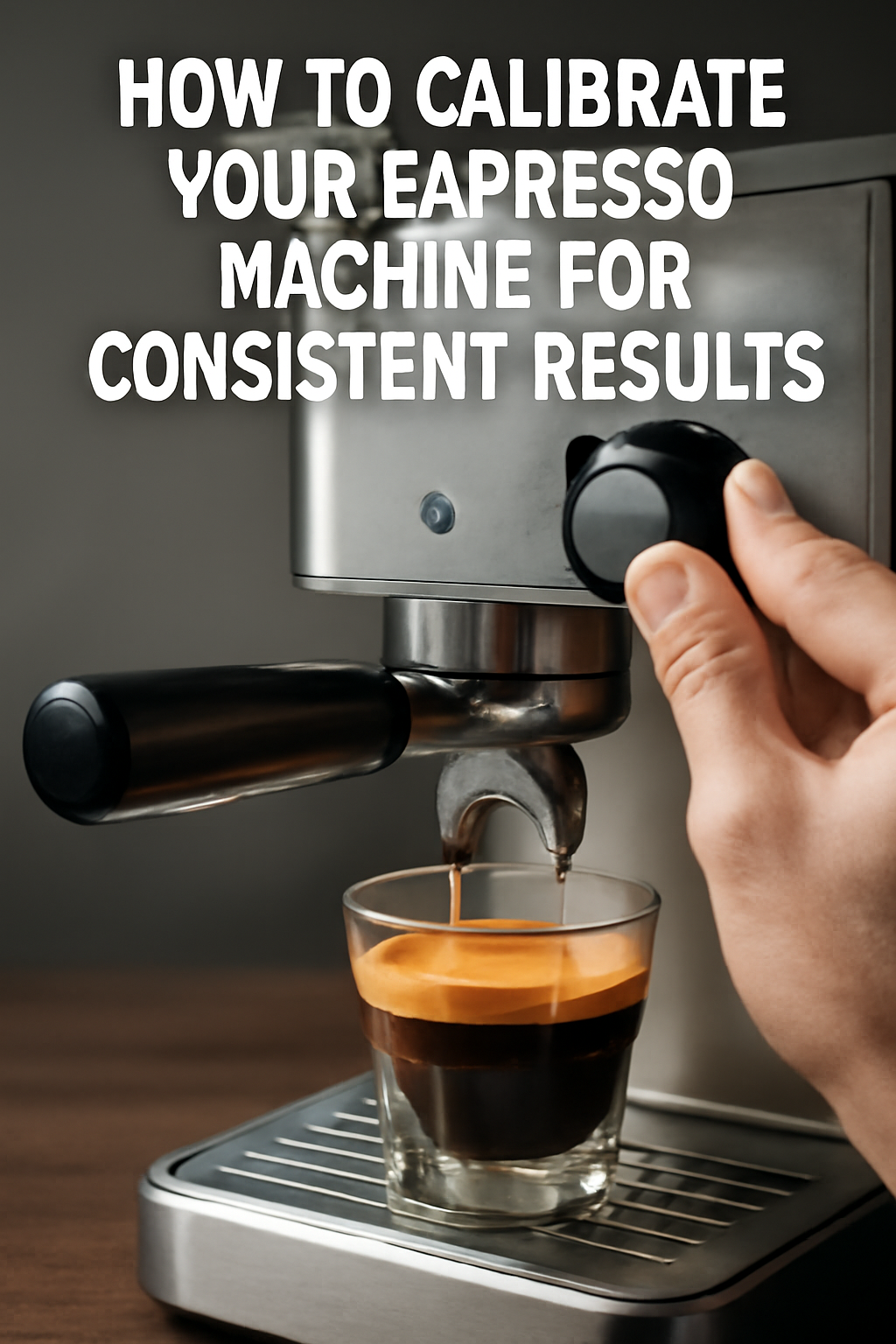Calibrating your espresso machine is essential to achieve consistent, high-quality espresso shots every time. Espresso extraction depends on precise control of multiple variables such as grind size, dose, tamping pressure, water temperature, and brewing time. Without proper calibration, these factors can fluctuate, leading to inconsistent taste, aroma, and texture. Whether you’re a professional barista or a coffee enthusiast, understanding how to calibrate your espresso machine will elevate your coffee-making skills and ensure your customers or guests enjoy the best espresso possible. This guide provides step-by-step instructions, practical tips, and troubleshooting advice to help you master espresso calibration.
Why Calibration Matters
Espresso calibration ensures that your machine, grinder, and barista technique work harmoniously to extract coffee optimally. Proper calibration results in balanced flavor profiles, correct extraction levels, and an appealing crema. It also minimizes waste, reduces machine wear, and improves operational efficiency.
Without calibration, espresso shots can vary widely, tasting too sour, bitter, weak, or burnt. Calibration aligns all variables, creating a predictable process that can be replicated with confidence.
Key Variables in Espresso Calibration
- Grind Size: The fineness or coarseness of the coffee grounds affects extraction rate.
- Dose: The amount of coffee used per shot, measured in grams.
- Tamping Pressure: The force applied to compact the coffee grounds in the portafilter.
- Water Temperature: The brewing temperature, typically between 90°C and 96°C (194°F to 205°F).
- Brew Time: The duration of espresso extraction, usually 25 to 30 seconds.
- Pressure: The machine’s pressure during extraction, generally around 9 bars.
Tools Needed for Calibration
- Precision digital scale
- Timer or stopwatch
- Espresso machine with adjustable settings
- Grinder with fine adjustment capabilities
- Coffee tamper with consistent pressure
- Measuring tools (e.g., shot glasses or espresso cups)
Step-by-Step Guide to Calibrate Your Espresso Machine
1. Preheat Your Machine and Equipment
Turn on your espresso machine and allow it to reach optimal operating temperature. Preheat the portafilter and cups by running hot water through them. Temperature stability is vital for consistent extraction.
2. Measure and Adjust Your Coffee Dose
Use a digital scale to measure the coffee dose accurately, typically between 18-20 grams for a double shot. Consistency in dosing prevents variability in strength and extraction.
3. Grind Your Coffee Correctly
Set your grinder to a fine grind suitable for espresso. Grind a small amount, then test for consistency and particle size. Adjust grind size based on extraction results during calibration.
4. Tamp With Consistent Pressure
Use a tamper to apply firm, even pressure (around 30 lbs) on the coffee grounds, creating a uniform puck. Avoid uneven tamping that causes channeling and uneven extraction.
5. Pull a Test Shot
Start the extraction and time the shot. A typical espresso shot should yield about 30-40 ml in 25-30 seconds. Observe the flow: it should start as a thin, steady stream, turning golden brown with crema.
6. Evaluate the Shot
Taste your espresso and note the flavor profile. If the shot is sour or weak, the grind might be too coarse, or the dose too low. If it’s bitter or harsh, the grind might be too fine, or extraction too long.
7. Adjust Grind Size and Dose
Based on taste and shot timing, make small adjustments to grind size and dose. Repeat the process, testing shots until you achieve balanced flavor and correct volume.
8. Monitor Water Temperature and Pressure
Ensure your machine’s water temperature and pressure are within recommended ranges. Some machines allow adjustment; if not, regular maintenance may be necessary.
9. Document Your Settings
Record your grind size, dose, tamping pressure, temperature, pressure, and extraction time. This documentation helps replicate results and troubleshoot issues.
Troubleshooting Common Calibration Issues
- Channeling: Water finds paths of least resistance through uneven grounds. Fix by improving tamping technique and grind uniformity.
- Flow Too Fast: Grind too coarse or insufficient dose. Adjust grind finer or increase dose.
- Flow Too Slow: Grind too fine or too much dose. Adjust grind coarser or decrease dose.
- Bitter Taste: Over-extraction due to fine grind or long brew time. Adjust grind coarser or shorten extraction.
- Sour Taste: Under-extraction due to coarse grind or short brew time. Adjust grind finer or lengthen extraction.
Maintenance for Consistent Calibration
Regular cleaning of group heads, portafilters, and grinders prevents buildup that affects calibration. Descale your machine as recommended to maintain temperature stability and pressure.
Tips for Maintaining Consistency
- Calibrate daily, especially with changes in coffee beans or environmental conditions.
- Train all baristas on the calibration process.
- Use fresh, quality coffee beans.
- Maintain equipment regularly.
Benefits of Proper Calibration
- Consistent, high-quality espresso shots.
- Enhanced flavor and customer satisfaction.
- Reduced waste and operational costs.
- Extended equipment lifespan.
Conclusion
Calibrating your espresso machine is an ongoing process that fine-tunes every variable to achieve consistent and exceptional coffee. By understanding the science behind extraction and following systematic calibration steps, you can elevate your barista skills and deliver outstanding espresso shots with confidence.
Start calibrating today, document your findings, and embrace the journey to espresso mastery.

